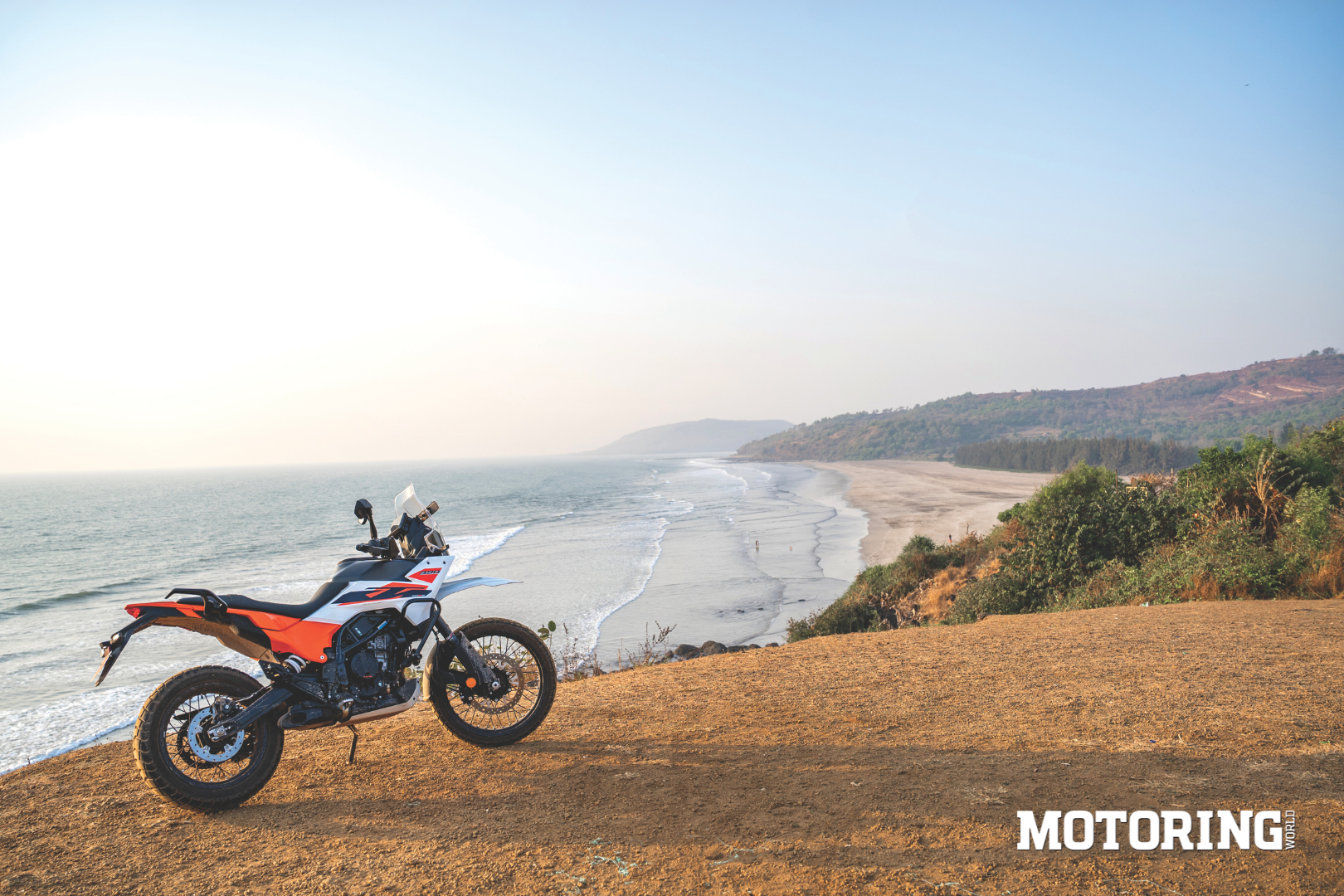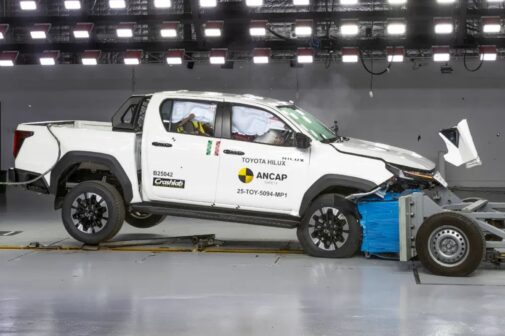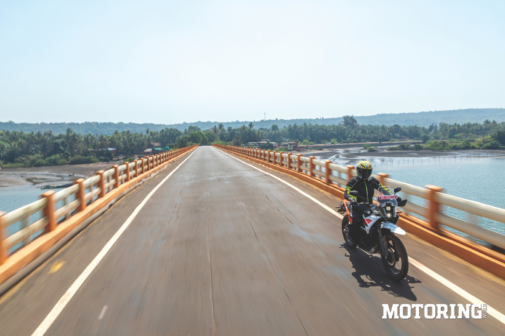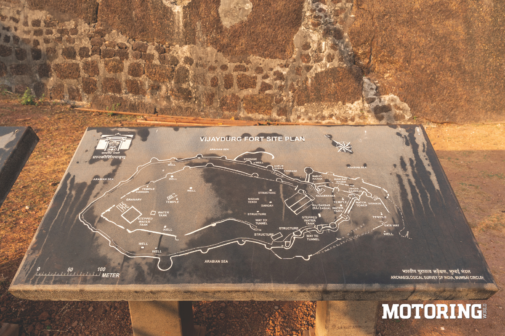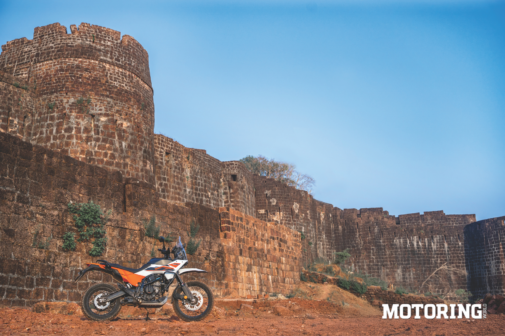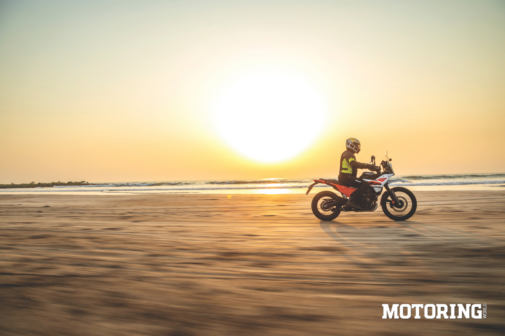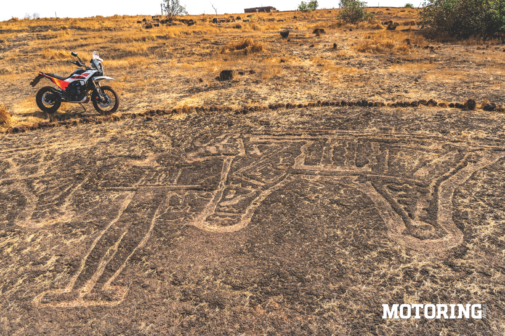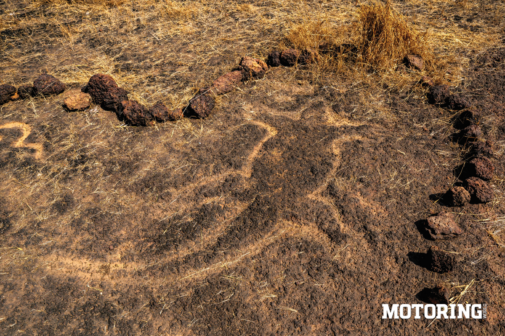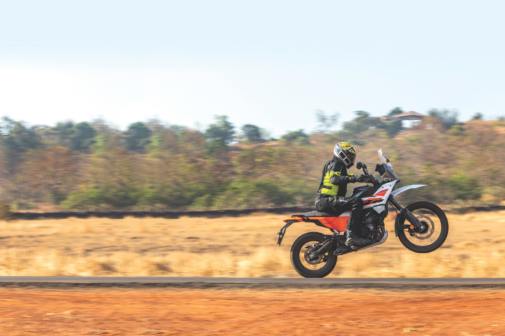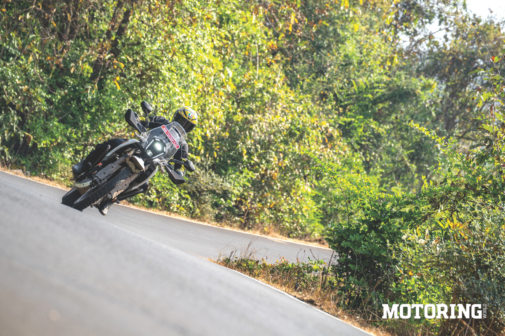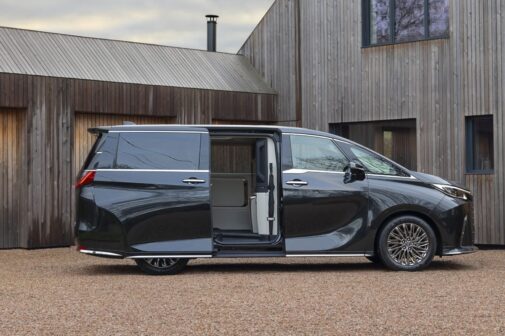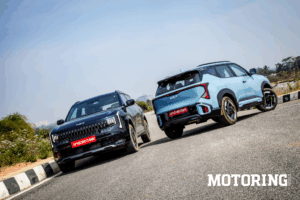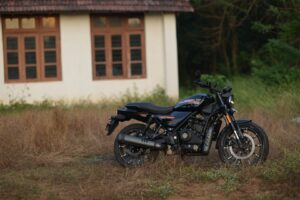For thousands of years now, human beings have stood around, pointing at faraway places. I’m pretty sure that’s how our ancestors got wherever they did without the convenience of Google Maps. All they had was first intent and then direction, most likely without any clue about their destinations or the consequences. Not like they had an abundance of choices back then, considering the absence of ‘civilisation’ as we ‘know’ it, and because they were truly travelling to survive. This particular ride on a brand-new KTM 390 Adventure put all of that into stark contrast, I must say.
I like to joke that both my parents’ ancestral houses are older than the USA, but only because it’s true. You know what’s older than most places? The Konkan, a region that draws me to itself with an invisible but unbreakable thread that reaches deep inside me, for reasons I’m still clueless about. This time around, I decided to ride back up the Konkan from Devgad to Mumbai, stopping at hitherto unvisited places over three days, and I had Kaizad, Manaal and Ruman for company, too. The plan was simple: overnight stops in Devgad and Dapoli, and exploring whatever we could along the way. Of course, as it goes with all rides with simple plans, Murphy tagged along uninvited as well.
Starting from Devgad saw us up early in the morning, as mist clung to a grove of coconut trees and turned into a wet mess on the bike’s seat. Already, the KTM felt like the right motorcycle to do this on, and I was about to be proven right in the most spectacular manner over the next three days. First, we were off to Vijaydurg, the oldest fort on the Konkan coast, for a bit of relatively recent history. And when we got there, Vijaydurg looked rather like an ageing rockstar refusing to retire. I could only imagine how it looked back in its heyday.
We climbed up the steps leading into the fort, and I was sure that ancient visitors wouldn’t have had an admittance as easy as this. There was an outer wall right at the shore, a patch of land, then a second wall, another patch of land, and then the actual fort itself. Said patches of land were effectively kill zones for anyone who’d survived getting off their boats in the first place. 1o wonder this place went undefeated for nearly a hundred years straight. By the way, it was Shivaji who gave it its current name, and it has also seen the command of the fascinating personality that was Kanhoji Angre.
The fort was built by Raja Bhoja II, the last ruler of the Kolhapur branch of the Shilahara dynasty. And the number of hands the fort changed was visible in the different colours of the stones that made the structure, going from black to red, marking different eras whose subtleties have largely been lost to time. I climbed up the second wall, looked down and imagined the patches of land below littered with the inanimate bodies of would-be conquerors. That day, though, it was littered with, well, litter. I got back down to observe that the ammunition room was the only one that looked fully intact. I suppose it had to be, no? However, instead of gunpowder, cannonballs and arrows, that day it held an assortment of materials used in the fort’s ongoing restoration.
An elderly gentleman was carrying out his function as a guide in practised articulate Marathi, positioning a small group of visitors exactly where he wanted. There were shapes in some of the fort’s stones with long-lost meanings. Vijaydurg’s actual entry gate at the top of a staircase that seemed more like a funnel for a throng of human bodies was the least-welcoming portal I’d seen in a long time. The fort’s insides, with the sea visible on three sides, were far more peaceful than its makers intended it to be. At least until a buffalo stared threateningly at us enough to incite laughter that was more than a little nervous. And after all that walking around in riding gear at an already balmy 8:30 am, I decided to head to our next destination — the petroglyphs of Barsu.
By now, I’ve travelled through most of interior Konkan, seeing as I’ve been at it for the better part of 20 years. And each time, the roads are different. I recognised certain landmarks along the way, but the last time I was down that road, it couldn’t be called one. This time around? Pristine tarmac! Well, for the most part, at least, and being on the 390 Adventure over the rough bits was like riding an overachieving sponge. The motorcycle fitted the ride’s mental and physical requirements better than my new riding trousers fit me.
After a few hours, we veered off a smooth tarmac stretch onto a dirt path made of the typical red Konkan soil. After a while, I wondered where the petroglyphs were and how, if at all, we’d find them‑ there was no one around but us and we had no clue where we were going. We kept going, and then, at the end of a vast sloping field full of golden grass, I saw a circle of stones on the ground and stopped next to it — and the sight etched itself into my mind as firmly as the ancient artwork in the rock. It depicted a human figure with its arms outstretched, with two beasts on either side. The lord of animals, known in myth as Pashupatinath.
We were in the middle of nowhere, with nothing but the sun burning down and a gentle wind sending waves through the shimmering grass. And in front of us was one of the oldest mysteries in the world in the form of carvings strewn about on the ground. Estimates place these petroglyphs at anywhere between 10,000 to 12,000 years old — just let that sink in for a moment. And being there in person, in those quiet moments, felt like we were in the world’s first art gallery. We rode around until we found the biggest glyph, one that made the first look like it was amateurish, the one you saw in the first image of this story. The four of us fell silent looking at it.
What did these prehistoric etchings mean? Were they works of art? Could be; art has always added meaning and depth to man’s life, after all. Or were they signboards in the rock, telling whoever came along next that they’d come to the right place? There were carvings of all sorts of animals: fish, big lizards, cattle, elephants, and whatnot. Not a single one of a cat or dog, though, I noted. Then again, this area was supposed to contain dozens of these carvings, and we only saw a handful of them. In the past decade, more than 1500 petroglyphs have been discovered in the Konkan, and very little has been accomplished in terms of their study. And so, pun very much intended, we’ve only scratched the surface of these ancient designs.
On the way to these petroglyphs, I’d seen the road lined with stones removed from the ground to mark so-called personal properties. And then came the thoughts: Did those ancient artists live with outdated notions or do we? What would they have made of our vehicles and devices? Did Shivaji ever see these carvings? From the four of us present there, was it possible that some of our ancestors made such petroglyphs here or elsewhere, perhaps even together? Why did my knees feel as old as the petroglyphs when I kneeled to take a closer look? Finally, when I found myself suggesting that we carve out figures of a motorcycle in the rock as a prank, we knew it was time to move on. I did so with a firm resolve to track down as many of these fascinating engravings as I could. And as we hit the tarmac once again, to head to the Anjarle lighthouse, the plan unravelled.
You see, I’d meticulously charted the route we’d take so that we never travelled more than 200 km on each day. And my mental compass is pretty accurate, too; I knew that if we more or less kept bearing east as we moved up the coast, we’d end up where we needed to be. So, when Google Maps led us to NH 66, one of my favourite roads ever, I was nothing but dismayed. I knew we were on the wrong road, but went along anyway. Now, the rhythm was lost, the mood was broken, the train of thought was derailed, the vibe was lost. However, it all came back when a series of three rises and dips in the road sent the KTM’s front wheel floating at stupid speeds.
To reach Anjarle on time, we had no option but to bat-out-of-hell it. The roads were narrow, the speeds were up, and it all became a highlight-reel blur. The place, the time, the motorcycle, the company — they were all meant to be. I don’t remember exactly how, but we reached the high cliff in front of the lighthouse before sunset. What was supposed to be a 200-km day had turned into a 400-km one. We did twice the distance to get just a bit further up the coast. No idea how. And as far as I’m aware, the Konkan has not been declared a time-space warp… yet.
Anyway, this spot is my favourite on the Konkan coast, and I always do my best to not miss it. I don’t know what it is exactly about the place; maybe it serves as nothing more than a beautiful microcosm of the Konkan’s eternal magnetic effect on me. And as I felt that beauty in every atom in my body, I thought that the day had proven that travel doesn’t always go according to plan, and that it’s okay to let yourself feel it. You never know what may come of it, right?
For me, even if there was the next day’s run to Mumbai, the ride ended in that corner of the Konkan, watching the waves down in the distance and that golden orb floating down into the horizon. The word Konkan means ‘part of a corner’ — no wonder, then, that man and motorcycle alike take to it the way they do. It’s a beautiful part of the world to experience movement, to ponder the fact that movement is the beginning of life itself at the cellular level. Is wanderlust inevitably coded into our very basic structures? Forts, petroglyphs and cliffs may keep standing, but we keep moving, don’t we? And travel in the Konkan certainly moves, in more ways than one. And at the end of the hot and hurried ride back home the next, a sight remained in my mind — our bunch of four, pointing at faraway places.





